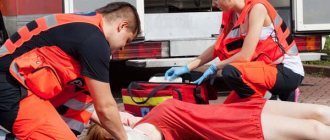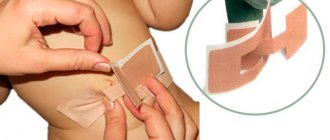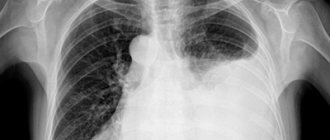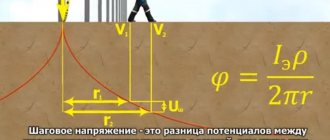Local therapist
Burnatskaya
Svetlana Nikolaevna
34 years of experience
Local therapist, occupational pathologist. Member of the Russian Scientific Medical Society of Therapists
Make an appointment
Breathing problems and the sensation of a foreign body in the throat can be signs of developing asphyxia. Asphyxia belongs to the category of life-threatening conditions that lead to circulatory and respiratory disorders. Regardless of the causes, asphyxia requires urgent measures, since death is possible as a result of the development of acute oxygen starvation within a few minutes.
The basis for the development of asphyxia can be:
- damage to the respiratory muscles;
- the presence of an obstruction that does not allow air to enter the lungs;
- dysfunction of the respiratory center.
In recent years, doctors have had to deal with such a pathology as autoerotic asphyxia, which occurs as a result of sexual experiments.
Classification
There are several types of this disease. Experts divide types of asphyxia according to the speed of development into acute and subacute. Depending on the characteristics of the process, degrees of asphyxia are distinguished: severe asphyxia and mild asphyxia.
Depending on the mechanism of occurrence, the following types of pathology are distinguished:
- mechanical asphyxia due to cessation or limitation of access to the lungs of air due to compression, narrowing or obstruction;
- traumatic, due to chest injuries;
- toxic, due to the entry of toxic substances into the body.
The human condition and the effectiveness of medical care largely depend on the degree of asphyxia.
Another classification provides for the division of types of pathology depending on the cause:
- compression – compression and strangulation asphyxia;
- closure – drowning, obstruction and aspiration;
- due to the confined space.
A separate type of suffocation is asphyxia of newborns and asphyxia of the fetus. Neonatal asphyxia is considered within pediatrics.
Violent mortality makes a significant contribution to the formation of demographic losses in the population of the Irkutsk region. Its structure is varied, and mechanical asphyxia occupies not the last place. According to an analysis of the police database of the State Budgetary Healthcare Institution of the Irkutsk Regional Bureau of Forensic Medicine for the period 2000-2012, the average mortality rate as a result of mechanical asphyxia was 4.5% of total mortality in Irkutsk. On average, in 58% of cases, ethyl alcohol in various concentrations is found in the blood of those who died from mechanical asphyxia (the amount applied to living persons corresponded to strong and moderate degrees of alcohol intoxication). Young people (18-29 years old) of all deaths as a result of mechanical asphyxia account for an average of 20%, while among the deceased young people the proportion of suicide by hanging is on average 18%. The data presented indicate high suicidal activity in the population of Irkutsk. According to UNICEF, by 2022, suicide will become the second leading cause of death in the world, overtaking cancer and second only to cardiovascular diseases. According to WHO estimates, every 40 people on Earth manage to commit suicide, and the number of failed attempts reaches 10-20 million a year. Based on the analysis of mortality from mechanical strangulation asphyxia by month, a certain pattern was noted with the highest peaks in rates in the spring and autumn, which are the most dangerous times of the year in terms of suicide.
Mechanical strangulation asphyxia from compression of the neck with a noose during hanging occurs in forensic medical practice more often than other types of asphyxia. Despite the apparent simplicity of diagnosis, the abundance of studied macro- and microscopic signs, asphyxia is not only one of the complex issues of forensic medicine, but is also most often accompanied by an atypical plot or casuistic sectional findings.
The case of double suicide is noteworthy. In the winter of 2012, in the private sector of one of the districts of Irkutsk, the corpses of two girls, 17 and 18 years old, were discovered, who committed suicide by hanging in a cold barn of a private residential building. A synthetic twisted rope was secured to the ceiling beam of the barn, after which it was forked and open loops were formed at the ends, twisted twice around the necks of the girls, facing each other, in a hanging position with the legs partially resting (Fig. 1).
Rice. 1. Double suicide by hanging.
During a forensic medical examination of the first girl’s corpse, a single bifurcated, closed, unevenly depressed, obliquely ascending strangulation groove from left to right was discovered in the upper third of the neck. The groove is located 143 cm from the plantar surfaces of the feet (with a body length of 164 cm). On the front surface of the neck in the upper third it is closed, almost transverse, 1.7 cm wide and 0.5 cm deep, and on the front surface of the neck on the right, 2 cm from the midline, it bifurcates into 2 branches. The upper branch is 0.7 cm wide and 0.5 cm deep, spreads from front to back and from bottom to top, along the right lateral surface of the neck, passing 1 cm from the angle of the lower jaw, then in the projection of the right mastoid process, and is lost in the scalp. The lower branch of the strangulation groove is located almost horizontally, 5 cm from the angle of the lower jaw and 7 cm from the mastoid process, 0.5 cm wide and 0.2 cm deep, extends to the back surface of the neck, where it meets a similar branch on the left lateral surface neck. The left branch passes 5 cm into the angle of the lower jaw, 5.5 cm from the mastoid process, 2 cm wide and 0.5 cm deep. On the posterolateral surface of the neck on the left, the groove bifurcates again, the upper branch, 1.5 cm wide, goes obliquely upward and is lost in the scalp, the second branch runs almost horizontally, 8 cm from the occipital protuberance, and closes with the lower right branch.
During a forensic medical examination of the corpse of the second girl, a double, unevenly depressed strangulation groove was discovered in the upper third of the neck. The lower branch of the furrow has an oblique horizontal direction from front to back and from left to right, closed. On the anterior surface of the neck, the lower branch is located along the upper edge of the thyroid cartilage, 0.6 cm wide and up to 0.5 cm deep; on the left lateral surface of the neck, the lower branch of the strangulation groove runs 2 cm from the angle of the lower jaw and 7 cm from the mastoid process, 1.8 cm wide and up to 0.5 cm deep; on the right lateral surface of the neck, the lower branch of the groove runs 3 cm from the angle of the lower jaw, 6.5 cm from the mastoid process, 1.8 cm wide and 0.5 cm deep; on the back surface of the neck, the lower groove runs 8.5 cm from the occipital protuberance, 0.7 cm wide and 0.3 cm deep. The upper branch of the groove is not closed, has an obliquely ascending direction from front to back and from left to right. On the anterior surface of the neck, the groove runs in the submental region, 2 cm above the lower branch of the strangulation groove, 1.4 cm wide and 0.2 cm deep. On the right lateral surface of the neck, the upper branch runs along the lower jaw and, not reaching the right corner of the lower jaw jaws 2 cm, fades. On the left lateral surface of the neck, the upper branch of the groove connects with the lower branch, then they follow one strip of impression on the back surface of the neck, where the upper one again takes its own course and spreads from bottom to top and from left to right, passes under the occipital protuberance, 0.6 cm from it , and fades away in the projection of the right mastoid process. The distance between the upper and lower branches is 1 cm. On the back surface of the neck there is a groove 1 cm wide and 0.3 cm deep.
Macroscopic asphyxial signs were noted: pinpoint hemorrhages in the conjunctiva of the eyelids, facial skin, diffuse cadaveric spots on the face, circular on the extremities, pinpoint hemorrhages under the pleura of the lungs and epicardium (Tardier spots), congestion of the internal organs, liquid state of the blood. Histological examination of internal organs revealed indirect micromorphological signs of mechanical asphyxia: foci of hemorrhagic edema, intraalveolar hemorrhages and pulmonary emphysema; dystrophic changes, foci of fragmentation in the myocardium; dystrophic changes in the pyriform cells of the cerebellum, widespread hemorrhages in the stroma of the thymus. Bokarius tests are positive in both cases; pinpoint light and dark red hemorrhages are visible to the naked eye in the skin ridges along the edges of the furrows. During a forensic chemical examination of the internal organs and fluids from the corpses, ethyl alcohol, narcotic and medicinal substances were not found. No mechanical damage to the cartilage of the larynx or hyoid bone was detected. Among other signs, when examining the corpses of the girls, attention was drawn to the same style of clothing, identical blue jackets, prints in the form of card hearts on their underwear, and one of the girls had a . Both girls have an average build, satisfactory nutrition; secondary sexual characteristics are expressed in accordance with gender and age, hair is long, light brown; found abundant dark red hemorrhagic contents in the uterine cavities, the integrity of the hymen was broken in both for more than 3 weeks at the time of the study.
From the point of view of the casuistry of the plot, another case of mechanical asphyxia deserves attention. In March 2012, the body of an unidentified man was found in a sewer manhole.
When examining the scene of the incident with the participation of a forensic expert, it was established that the man’s corpse was tightly pressed by the sewer manhole cover, fixed on the opposite side with a loop to the body of the sewer manhole. The hatch cover is located on the front surface of the man’s neck, shoulders and chest, the edge of the hatch is in the mouth. The lower part of the body is in a free hanging position inside the sewer well (Fig. 2).
Rice. 2. Mechanical compression asphyxia from compression of the chest and neck organs by a manhole cover.
From the explanation of an eyewitness (a friend of the deceased) it is known that a man and a woman of an asocial type lived in the sewer manhole. After drinking alcohol, we went to the store; upon returning, the woman went down the well first and, without waiting for her partner, fell asleep. While descending, the man probably slipped on a steep staircase, began to fall and pulled the manhole cover towards himself, with which he was crushed. The GOST 3534–99 lightweight manhole cover, made of cast iron, weighing 24.9 kg, turned out to be sufficient in weight and size to put pressure on the victim’s neck and chest.
A forensic medical examination of the corpse revealed the following features: a puffy face, with violet-bluish cadaveric spots, in the frontal region at the border of hair growth - petechial and ecchymotic intradermal bluish-red hemorrhages, conjunctiva of the eyelids with injection of blood vessels and pinpoint dark red hemorrhages; in the corners of the mouth - a transverse stripe of depression in the form of irregularly oval-shaped transverse abrasions measuring 3x1.3 cm with a dried yellow-red parchmented bottom. A similar mark of indentation on the chin and the border of the lower lip in an area measuring 6.5x5.0 cm, the lower lip is turned outward by the mucous membrane. The musculocutaneous flap of the head is yellowish-reddish, moist, dense, with moderate blood filling; in the frontal and parietal regions - pinpoint dark red ecchymotic hemorrhages with a diameter of 0.3 to 0.1 cm; lungs are doughy-airy, with multiple Tardieu spots under the visceral pleura; venous congestion of internal organs, liquid state of blood. When examining the spine, a tear of the anterior longitudinal ligament was found between the VII cervical and I thoracic vertebrae with small focal dark red hemorrhage into the soft tissues around the tear in an area measuring 3x3x0.2 cm. There was no damage to the spinous processes of the vertebrae. At the site of the tear of the anterior longitudinal ligament, the membrane of the spinal cord, like the brain itself, had no damage and no hemorrhages were detected. The pelvic bones, sternum, and ribs are intact.
During a forensic chemical examination of the blood and kidneys from the corpse, ethyl alcohol was found: 3.0‰ in the blood, 3.0‰ in the kidney. Forensic histological examination data: hemorrhages in soft tissues from the site of spinal injury along the anterior surface; hemorrhagic imbibition of groups of muscle fibers of skeletal muscle from the site of spinal injury along the posterior surface; foci of emphysema, hemorrhagic edema, distelectasis in the lungs; dystrophic changes, foci of fragmentation in the myocardium; swelling of the brain and spinal cord; dystrophic changes in the piriform cells of the cerebellum. Based on the given signs, the expert concluded that the death of the unknown man was due to mechanical compression asphyxia from compression of the neck and chest with a blunt, hard, heavy object. The content of ethyl alcohol in the blood corresponded to a severe degree of alcohol intoxication for living persons.
Another case of mechanical asphyxia is interesting, because at first glance, before and after familiarization with the materials of the pre-investigation check, it left an ambiguous perception. Expert opinions were divided, but the intuitive conviction of an expert cannot replace the objective evidence of the investigation. Establishing the type of death (murder, suicide, accident) is the prerogative of law enforcement agencies, so we present this case as a statement of facts.
In December 2015, the corpse of a young man was brought to the department of forensic medical examination of corpses of the Irkutsk Regional Bureau of Forensic Medicine for examination. In the decision to order a forensic medical examination, other than the place where the corpse was raised, there were no circumstances surrounding the occurrence of death or the discovery of the corpse. The corpse is wearing a T-shirt and sweatpants, with its lower limbs bound around the knees with duct tape. A thick layer of adhesive tape was wound around the head, passing horizontally across the face and occipital region, almost completely covering the head, with the exception of a small area in the parietal region, then passed to the neck in a circular pattern. The largest number of rounds occurred at the level of the openings of the nose and mouth, as well as the neck. In the frontal region, at eye level, the adhesive tape did not adhere tightly to the skin. After cutting the tape along the back surface and removing it from the head, multiple glued rounds of adhesive tape resembled a helmet-mask.
On the skin of the forearms in the lower thirds along the posterior and outer surfaces with a transition to the dorsal surfaces of the hands, stripe-shaped oblique transverse areas of depression with stripe-shaped unidirectional intermittent abrasions were found. The cadaveric spots had an intense dark purple color on the anterior, lateral and posterior surfaces of the chest, were located almost circularly on the hands, with pronounced pinpoint and small-focal dark red intradermal hemorrhages against their background. During internal and external examination, general asphyxial signs were revealed, confirmed by histological examination. According to the results of a forensic chemical study, ethyl alcohol, narcotic and medicinal substances were not found. Based on the data obtained, a final diagnosis of “obstructive asphyxia from closing the openings of the mouth and nose” was made.
Later, from the materials of the pre-investigation check, it became known that the man was found in his own apartment on the 9th floor of an apartment building, locked from the inside with a massive bolt; the windows and balcony doors were also closed, the general order was not violated. The man was lying on the floor face up, the left upper limb was on the front surface of the abdomen and pelvis, the right one was placed under the back surface of the right thigh, the right lower limb was slightly bent at the knee joint, the heel area rested on the floor; both hands meet at the inner surface of the right thigh, fastened with fastened metal handcuffs; the left lower limb is straightened, slightly abducted from the right, located on the floor. According to the relatives of the deceased, shortly before his death he was looking for handcuffs, which may indicate suicide planning (Fig. 3).
Rice. 3. Mechanical asphyxia from closing the openings of the nose and mouth.
This sophisticated method of suicide is alarming, since mechanical asphyxia, due to the duration of thanatogenesis, takes an average of 5-7 minutes, and loss of consciousness occurs in the 2nd minute. In this case, perhaps, due to the loose fit of the adhesive tape, there was an air flow, which made it possible to prolong the pre-asphyxia period and fasten the handcuffs independently.
Cases presented: double suicide of girls who, in addition to identical clothes, had synchronized menstrual cycles; a young man who decided to end his life in such a sophisticated way, without leaving himself a single chance of salvation; an unfortunate person living in a thermal collector who, while heavily intoxicated, was unable to get into his home - represent a small part of the unusual cases of death from mechanical asphyxia. In such cases, often during an examination, in the absence of operational and investigative information, it is not possible to understand the circumstances of the death or to unambiguously assume the manner of death.
Conflict
of interest : The authors of the article have confirmed that they have no financial support/conflict of interest to report.
Symptoms and signs of asphyxia
The main symptom of the condition is progressive suffocation, in which the lack of oxygen in tissues and blood, replaced by carbon dioxide, sharply increases.
Signs of asphyxia depend on the reasons that caused the suffocation:
- in an acute condition, due to foreign objects entering the upper respiratory tract or when they are compressed, convulsive respiratory movements occur in the absence of breathing, convulsions, bluishness of the face, loss of consciousness, spontaneous urination and stool excretion, cardiac arrest;
- in the subacute state, breathing movements become deep and rare, the pulse quickens, blood pressure rises, convulsions begin, and loss of consciousness occurs.
Signs of asphyxia also depend on the phase of the condition:
- the first phase is characterized by fear, severe shortness of breath, darkening of the eyes, dizziness, bluish skin, increased blood pressure and increased heart rate;
- the second phase is characterized by increased shortness of breath, a decrease in pulse and respiratory rate, a decrease in pressure, and an increase in cyanosis;
- the third phase is characterized by periodic stops in breathing, a strong decrease in pressure, loss of consciousness, the development of coma, involuntary ejaculation, defecation and urination;
- the fourth phase is characterized by rare deep sighs, the inability to feel the pulse and determine the pressure, and convulsions.
If asphyxia develops gradually, the victim may sit with his tongue hanging out and his mouth wide open. At the same time, the skin is pale and the cyanosis of the nails and lips is pronounced.
Are you experiencing symptoms of asphyxia?
Only a doctor can accurately diagnose the disease. Don't delay your consultation - call
Diagnosis confirmation
The diagnosis of asphyxia is confirmed by the absence of pulse, cardiac activity, or their weakening. There may be an increase in blood pressure at the very beginning of the process, an increase in the intensity of breathing (frequent breathing, but not deep). Terminal breathing that sounds like wheezing. The act of spontaneous urination, defecation, ejaculation - due to the weakening of all muscle sphincters in the body, as a rule, occurs in the last stages of the asphyxial state. Blood gas studies reveal a significant increase in carbon dioxide in the blood and a lack of oxygen.
Causes
The causes of asphyxia are very different, in particular, asphyxia in a child can develop due to allergies to certain foods, care products or medications.
Choking can occur as a result of:
- compression from outside the respiratory tract (for example, asphyxia during childbirth);
- pathological processes of the lungs and respiratory tract (edema, burns, spasms);
- ingestion of liquid or foreign bodies (water, vomit, blood) into the respiratory tract;
- tongue retraction;
- overdose of drugs, resulting in relaxation of the respiratory muscles;
- some diseases (botulism, myasthenia, etc.);
- asthmatic attacks, allergic edema, pleurisy;
- traumatic brain injury, stroke;
- prolonged convulsive conditions (tetanus);
- exposure to toxic substances (cyanides, nitrites, etc.).
Occupational conditions associated with the need to breathe a forced gas mixture can also provoke suffocation, which can lead to a disruption in the oxygen supply.
Asphyxia of newborns can be caused by aspiration of amniotic fluid, intracranial birth injuries, and fetoplacental insufficiency.
What causes lead to asphyxia?
The largest percentage of asphyxia is hanging and drowning. Drowning is used in a broad sense, that is, it can be suicide, murder, or an accident. Strangulation with a noose or hands occurs most often during domestic quarrels or fights. Compression of the neck organs can be for a deliberate purpose or during car accidents, building collapses, etc. Asphyxia by vomit occurs most often with severe alcohol intoxication during deep sleep, and can occur in small children and patients in a coma.
In various diseases, asphyxia occurs due to severe swelling of the respiratory tract, which prevents the passage of air into the lungs. This is especially pronounced in allergic edema and anaphylactic shock.
Complications
Choking can cause serious complications and unpleasant consequences. The most common consequences of suffocation are:
- neurological and mental pathologies (impaired memory (amnesia) or intelligence, up to dementia);
- disturbances in the activity of the cardiovascular system;
- traumatic shock with manifestations of irritability and indifference;
- vocal cord paresis;
- infection with a risk of developing pneumonia;
- swelling of the brain or lungs;
- death.
Pregnant women should be wary of spontaneous miscarriage.
Help for asphyxia should be provided as soon as possible.
Examination for asphyxia in a confined space
Death due to oxygen deficiency can occur in a variety of confined spaces, such as chests, small rooms with no air circulation, refrigerators, compartments of sunken ships, and airplane cockpits. Also, a similar type of asphyxia can occur in an insulating gas mask or in a bag placed over the head. Death occurs as a result of murder, suicide or accident. The decrease in the amount of oxygen and, accordingly, the accumulation of carbon dioxide occurs gradually. Examination of asphyxia in this case resolves the issue of the cause of death. As a rule, determining the cause of death is not difficult. The corpse exhibits characteristic general asphyxial signs. An autopsy reveals the following characteristic features:
- Congestion of the brain, accompanied by edema.
- Pulmonary edema.
- Congestion of internal organs, which is stagnant.
- Hemorrhages in the mucous membranes of the stomach, trachea, bronchi.
Legal basis for the examination of asphyxia
The appointment of an examination for asphyxia is carried out in accordance with the generally accepted procedure for the appointment of forensic medical research, the regulations of which are enshrined in Article 79 of the Civil Procedure Code of the Russian Federation.
When to see a doctor
Asphyxia, the consequences of which can be very severe, requires urgent medical attention. Otolaryngologists or therapists are involved in eliminating the causes and consequences of this condition. The help of a qualified doctor may be required for the following diseases: swelling of the larynx or lung, panic attack, pneumonia, anaphylactic shock, bronchial asthma.
To make an appointment with a doctor or urgently call a specialist to your home, you should:
- with spasms of the muscles of the larynx;
- with paralysis of the respiratory muscles;
- when foreign bodies, food, or water enter the respiratory tract;
- in case of electric shock;
- in case of carbon monoxide poisoning or toxic fumes.
JSC "Medicine" (clinic of academician Roitberg) in Moscow offers the services of qualified otolaryngologists and therapists in the treatment of the consequences of asphyxia. The clinic is located at 2nd Tverskoy-Yamskaya lane, building 10, 5 minutes from the Moskovskaya metro station. Highly qualified otolaryngologists, many of whom have higher medical titles, and the use of modern treatment methods allow patients to be confident in the success of therapy.
First aid. A reminder for those around you
First of all, call an ambulance! Next, free the airways from mechanical stress (remove the noose from the neck, remove heavy objects from the body, try to at least partially remove foreign objects from the airways). Assess the pulsation of the arteries in all possible places familiar to you (wrist, neck, thigh). Pay attention to the chest - whether it moves, whether it makes breathing movements. Assessing the situation should take a few seconds!
Start cardiopulmonary resuscitation until the doctor arrives. Cardiopulmonary resuscitation is performed according to the principle of two mouth-to-mouth breaths, thirty chest compressions (pressures) in adults, two breaths and fifteen compressions in children. It is advisable to inhale using a mask or any thin fabric that allows air to pass through (for example, a clean handkerchief). People who have any diseases that can provoke asphyxia may have medications in the form of ampoules, inhalers, nebulizers in their pockets or near them.
If you are still in doubt and you do not have certain knowledge in the field of first aid, just call a doctor!
Diagnosis of asphyxia
Choking is diagnosed based on the results of a general examination and symptoms, taking into account the causes of the development of the pathology. During the diagnostic process, doctors at our clinic:
- collect complaints and medical history;
- perform a general examination of the patient, measuring pressure and listening to the lungs;
- determine the level of blood oxygen saturation using pulse oximetry technology.
After determining the phase of suffocation, the doctor may refer you for a consultation with a pulmonologist or endoscopist. In some cases, an ultrasound examination is performed if the patient's condition is not acute.
JSC "Medicine" (clinic of academician Roitberg), located in the central district near the metro stations "Mayakovskaya", "Chekhovskaya", "Novoslobodskaya", has the latest laboratory and diagnostic equipment for conducting a comprehensive examination.
Questions to ask a specialist examining asphyxia
- Is mechanical asphyxia a cause of death?
- As a result of what impact did mechanical asphyxia occur?
- What are the features of the strangulation groove?
- Is the strangulation groove intravital or postmortem?
- Are there signs of struggle or self-defense?
- What object was used to compress the neck?
- Was the cause of death compression asphyxia?
- What signs indicate compression (any other) asphyxia?
- What is the victim's blood alcohol content?
- Are there marks on the neck of the corpse consistent with squeezing by hand (noose)?
- What was the relative position of the victim and the attacker?
- What are the features of the loop?
Treatment
The set of therapeutic measures is determined depending on the cause and phase of suffocation. Surgeries are performed, artificial respiration devices are used, and effective medications are used.
The main efforts of doctors are aimed at:
- to eliminate the cause of the condition;
- to ensure airway patency for air;
- to restore normal oxygen levels in the blood;
- to restore normal cardiovascular activity;
- in case of poisoning, antidotes are administered.
Patients are prescribed medications to maintain the functions of the respiratory and cardiovascular systems. In the presence of chronic diseases, therapy is prescribed according to indications. If necessary, in complex cases, the patient can be sent to a hospital. JSC "Medicine" (clinic of academician Roitberg) has a well-equipped hospital with comfortable rooms.
Treatment tactics after eliminating the causes
After eliminating the causes of suffocation, the patient is hospitalized, since the condition entails many functional disorders of the body. Monitor vital signs (respiration, pulse, blood pressure, etc.). If you are unable to breathe on your own, you will be connected to a ventilator. Cardiac disorders are corrected with various medications according to indications. Treat the underlying disease (bronchial asthma, infections, allergies, toxic poisoning). For violent types of asphyxia, consultation with a psychiatrist is possible in the future.
How to sign up
To make an appointment with a doctor at our clinic, you can use any of the following methods:
- online form on the website;
- by phone +7 (495) 775-73-60;
- through your Personal Account or Mobile Application.
If necessary, you can get emergency help by phone.
JSC "Medicine" (clinic of academician Roitberg) is located in the center of Moscow at the address 2nd Tverskoy-Yamskaya lane, building 10. The clinic is located near the metro stations "Mayakovskaya", "Tverskaya", "Chekhovskaya", "Belorusskaya".







